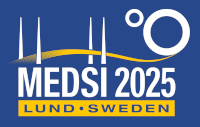Speaker
Description
In this paper, we present the preliminary development and optimization of a bending mirror system conducted as a preparatory study for the Shenzhen Superconducting Soft X-ray Free-Electron Laser (S3FEL). A prototype of the dynamic bending system is fabricated for experimental validation. It is designed to bend a flat mirror to 500 m radius of curvature (360 m RoC experimentally achieved eventually). Surface quality of the mirror before and after then bending are characterized in a cleanroom to minimize environmental disturbances. The bending system was mounted on the granite base of a long-trace profiler (LTP) for high-precision metrology. Two technical approaches are explored on this system. The first involved a coarse force estimation method based on analytical bending formulas, combined with manual fine tuning. The second employed a surrogate model constructed through transfer learning-based neural networks to enable rapid prediction and inverse optimization of actuator forces. Experimental evaluations of both approaches confirm the system’s capability to achieve large-range curvature modulation while maintaining sub-microradian slope precision.
Funding Agency
This work is supported by The National Natural Science Foundation of China (Grant No. 12305360) and Shenzhen Basic Research Program (Grant No. JCYJ20240813164511016).

